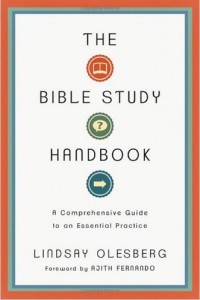Right Column Text
Manuscript study started under the late Paul Byer in 1953. Paul was an InterVarsity Christian Fellowship staff seeking to help students dig into Scripture. For more details on its history, Click Here.
Now fast forward to… 1986 and pardon the BIG HAIR / BIG GLASSES. Here Paul both explains manuscript study and leads a group through it.
A person doesn’t have to have a breadth of Bible knowledge to join in because manuscript study puts EVERYONE ON THE SAME LEVEL, with the same passage in front of them and no need to “jump all around the Bible.” Even a person with no biblical background can feel right at home and not intimidated as a participant.
Okay, so here’s another video with a little different take on manuscript study–actually a lot different. We’ll call it a CONTRAST to Paul Byer’s substance, but hey, it’s only 2 1/2 minutes long and kind of fun.
Manuscript study is all about SUBSTANCE but it’s also about STYLE as well–a FUN, EASY-TO-LEARN and INVITING approach to learning more about who God is and who we are in relationship to him… together!
In its own way the video covers the three steps of inductive Bible study:
“Who, what, where and how….” — Observation
“Why’s that there? What’s the author trying to say?” — Interpretation
“Head, heart, hands and feet….” — Application
MANUSCRIPT STUDY HANDBOOK
Lindsay Olesberg writes a 253 page, one-of-a-kind book on how to get the most out of the Bible. What’s unique about Lindsay’s work is how she highlights the manuscript study method. Well written with a lot of hands-on exercises, this is an excellent reference for those desiring to go deeper in their study of Scripture. To order the book, Click Here.
HOW TO LEAD, MANUSCRIPT STYLE
Ever thought of leading a manuscript study? If you haven’t, we hope you will. Leading a manuscript group study differs slightly from leading a regular Bible study because group members get the opportunity to study right before they discuss. So, you can ask general observation questions–Who, Where, When, What and How–and expect the group to facilitate more of the discovery process. Here’s the basic steps.
–READ the section together out loud. Such reading gives the group a sense of initial togetherness.
–STUDY individually for 15-30 minutes—as long as group members are engaged—with colored pens/pencils.

–DISCUSS your observations together which can be done one-to-one or within the small group.
Ask the W questions: Who’s involved & where? What’s going on & when? How’s it happening?
–DRAW OUT key interpretative questions/conclusions (the whys) within a small group discussion. Good observations will naturally lead your group to solid interpretations.
–WRAP-UP with the leader summarizing key points which leads to personal application.
–APPLY your insights through further one-to-one or small group sharing, prayer and action.
Group members can read and study their manuscript ahead of time if they’d like but this is not required. Group meetings are typically 1 1/2 to 2 hours long and include time for personal study. Group size can range from just a few to dozens as long as the group breaks up into smaller groups for discussion and prayer.


